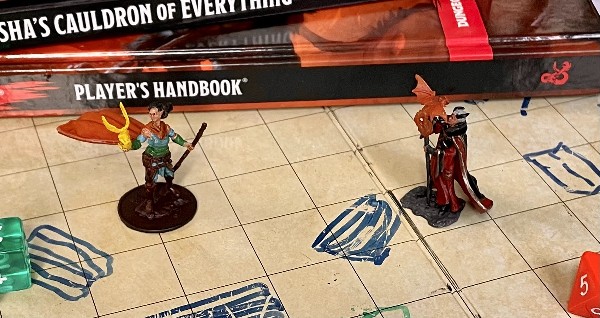

The creature is limited in the actions it can perform by the nature of its new form, and it can't speak, cast spells, or take any other action that requires hands or speech unless its new form is capable of such actions. If it reverts as a result of dropping to 0 hit points, any excess damage carries over to its normal form, As long as the excess damage doesn't reduce the creature's normal form to 0 hit points, it isn't knocked unconscious. The target assumes the hit points of its new form, and when it reverts to its normal form, the creature returns to the number of hit points it had before it transformed. It retains its alignment and personality. The target's game statistics, including mental ability scores, are replaced by the statistics of the new form. If you turn a creature into another kind of creature, the new form can be any kind you choose whose challenge rating is equal to or less than the target's (or its level, if the target doesn't have a challenge rating). An unwilling creature can make a Wisdom saving throw, and if it succeeds, it isn't affected by this spell.Ĭreature into Creature.

Shapechangers aren't affected by this spell.
#5E AWAKEN FAMILIAR FULL#
If you concentrate on this spell for the full duration, the transformation becomes permanent. The transformation lasts for the duration, or until the target drops to 0 hit points or dies. You transform the creature into a different creature, the creature into an object, or the object into a creature (the object must be neither worn nor carried by another creature). You listed lots of examples of valid targets for True Polymorph but didn't actually seem to ask any questions.įirst, true polymorph is a 9th level spell so can only be used by a 17th level caster or above who actually chooses the spell.Ĭomponents: V, S, M (a drop of mercury, a dollop of gum arable, and a wisp of smoke)Ĭhoose one creature or nonmagical object that you can see within range.

I don't think there are any answers out there. I would like to know if there are official answers to some of those questions anywhere. A 17 lvl spellcasting Simulacrum has spent all its spell slots, becoming nearly useless, so the party's spellcaster polymorphs it into an Adult Gold Dragon. A Wizard wants a servant who can speak with visitors, carry messages, do shopping.etc., while hiding the fact that it's a magical creature, so they polymorph the Magen into an NPC humanoid. The party is going to go dungeon delving, and the Paladin's Rhino Special Mount is going to be useless, so the party's spellcaster polymorphs it into an Imp who can help scouting. A Wizard wants to send the Homunculus as a spy/scout, but they fear that they will fail their Stealth check and be spotted, so they change them into an Owl, so they can spy while hiding their true appearance. A Wizard wants to hide the fact that he is an spellcaster, so he changes his Homunculus into a pet like a cat, small dog, ferret.etc. A Wizard wants their Familiar or Homunculus to act as a valet or butler, so they true polymorph it into an NPC commoner. I think there are tons or ways this could happen during a game: Have I missed something? It seems like something that should have been answered already. That is a question that often comes out in forums, but I haven't read an official position from the Sage Advice site or similar. I would like to know what happens when you use True Polymorph to permanently change a creature that is under you magical control, like a Familiar, Special Mount, Homunculus, Simulacrum, Magen or Golem.


 0 kommentar(er)
0 kommentar(er)
